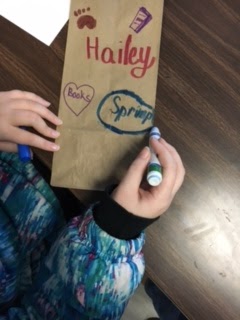Last month I read The Invisible Boy with a class and the conversation turned to popularity, fitting in and being yourself. The conversation was so good we needed a follow up lesson. Here it is:
Standards:
|
ASCA Mindsets &
Behaviors (Domain/Standard):
Mindsets: 1. Belief in development of whole self, including a
healthy balance of mental, social/ emotional and physical well-being 3. Sense
of belonging in the school environment
Behavior- Social Skills:
|
2. Create positive and supportive relationships
with other students5. Demonstrate ethical decision-making and social
responsibility6. Use effective collaboration and cooperation skills 7. Use
leadership and teamwork skills to work effectively in diverse teams 8.
Demonstrate advocacy skills and ability to assert self, when necessary 9.
Demonstrate social maturity and behaviors appropriate to the situation and
environment
Student Learning Objectives: I can create a definition of popularity. I can work in a group, with a partner, and by myself. I can explain what it means to fit it.
Materials: Everyone
Loves Bacon, paper bags, markers or crayons, I Wish
slips of paper, post it notes or scrap paper.
As a table/ group discuss what they think
is the definition of popularity. You can also have them discuss what it means to fit in. Then on a post it note or scrap papers ask
them to write down their definition of popularity and/or fitting in. This will be a working definition they can change and add to throughout class.
Next, read and discuss Everyone
Next we played a quick game of Quiz Quiz Trade for review.
Then, I asked students to think about the discussion they had today and the book and go back to their definition. They could add on, change, etc. and then they turned in for their exit ticket.
 Next, ask students to think about a time they might have hidden
something about themselves because they wanted to fit in. I asked them to think of things they have been scared to share for fear of fitting in.
Next, ask students to think about a time they might have hidden
something about themselves because they wanted to fit in. I asked them to think of things they have been scared to share for fear of fitting in.
Each student then got to decorate their paper bags with
things we know about them, that they are comfortable sharing, that anyone might
know about them that isn’t private. I had a bag as an example.
Then ask students
fill out the I Wish slips; I wish my teacher knew.... I wish my class knew..... I wish my parents knew.....and I wish....., These slips went inside of their bags, because they are often hidden and take a lot of
courage to share. If time allows, students may share their answers.
 Lastly I invite
students to leave their bags with me if they want me to know something about
them that is on the inside. I took them home over the weekend and read and wrote notes back to the students.
Lastly I invite
students to leave their bags with me if they want me to know something about
them that is on the inside. I took them home over the weekend and read and wrote notes back to the students.  |
| A student with Down's shared she wished her class knew how scared she got in crowds. |
Plan for
Evaluation: How will each of the following be collected?
Process Data:
number of classes taught, number of students in each class
Perception Data: Number of students
able to create a definition of popularity/fitting in. Number of students able to answer
QQT game questions.
Outcome Data: Number of student self referrals about
concerns about fitting in or popularity. Number of student self referrals for peer relationships
(including bullying and friendship).
Follow Up: Teacher will be given a copy of Lady
Pancake and French Toast for follow up in morning meeting.





















































